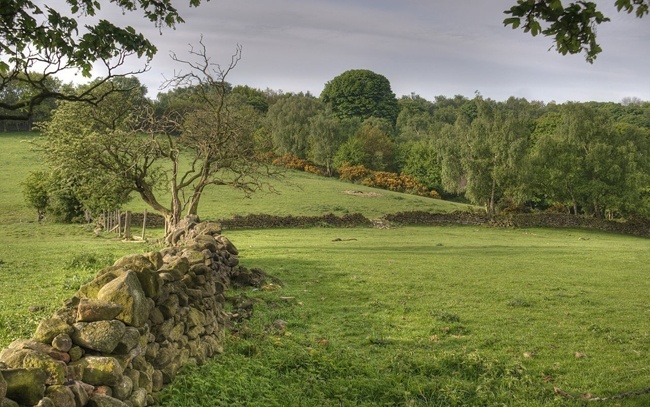Chapter 3. Environments, Elements, and Information
Context is worth 80 IQ points.
âALAN KAY
A Wall and a Field
SOCIAL NETWORKS AND AIRPORTS donât exist in a vacuum. Theyâre part of a wider world. And humans didnât evolve with mobile phones in hand. Our bodies and brains grew in predigital environments that shaped the way we understand our surroundings. If context in digital environments is so hard to get our heads around, maybe we need to begin by establishing up front what an environment actually is. Take a look Figure 3-1, an idyllic landscape in Derbyshire, England.

We might look at this landscape and assume that thereâs not much information here, but there actually is. This is as much an âinformation environmentâ as any website or city intersection. That is, for us to just get around in a place like this, there has to be information about the structures in the environment that our bodies somehow understand well enough to take action. Where can we walk? What can we eat? What can we hold in our hands?
Most of this environment happened all on its own, growing naturally. But also note the stone wall in the field. Some of the earliest structures humans ever added to their environment were of this sort: stones stacked to create barriers and boundaries. Such structures have a physical effect of stopping or slowing terrestrial ...
Get Understanding Context now with the O’Reilly learning platform.
O’Reilly members experience books, live events, courses curated by job role, and more from O’Reilly and nearly 200 top publishers.

